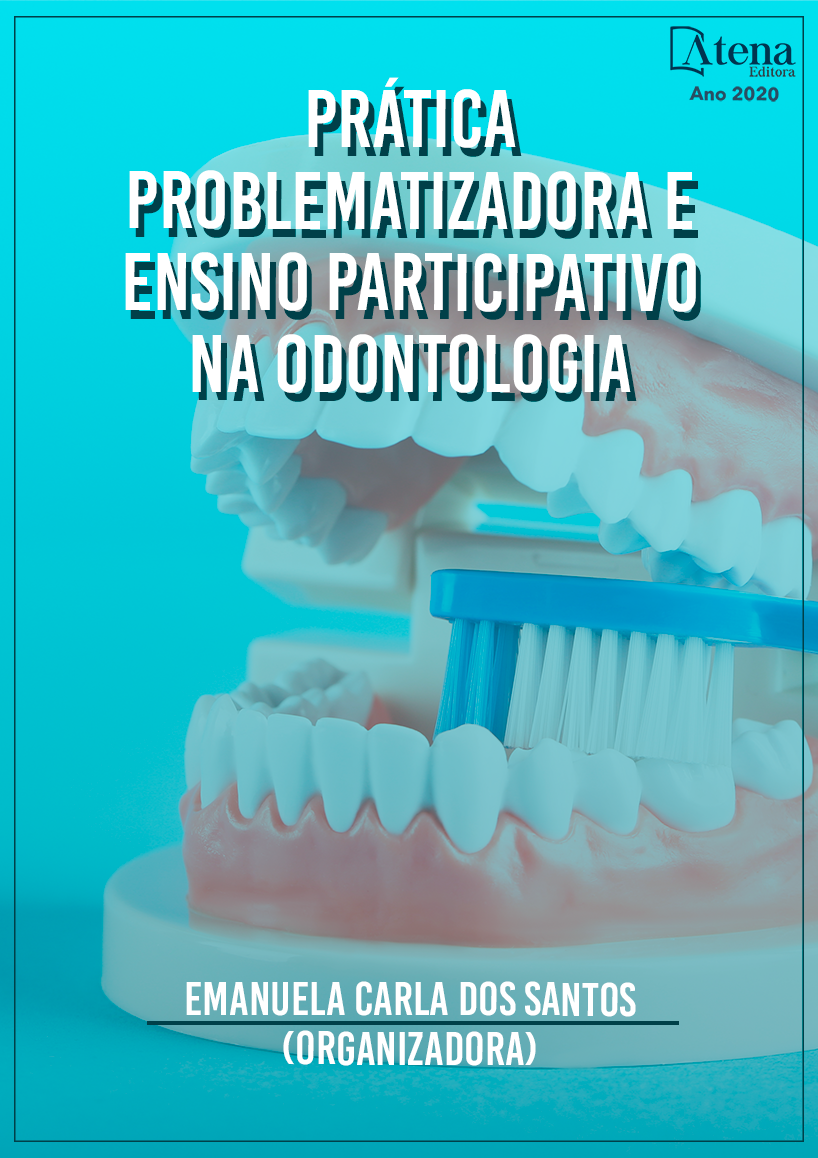
TUMOR ODONTOGÊNICO EPITELIAL CALCIFICANTE (TUMOR DE PINDBORG) NA MANDÍBULA: RELATO DE CASO
O tumor odontogênico epitelial calcificante (TOEC), também conhecido como tumor de Pindborg é uma neoplasia benigna rara. Acomete preferencialmente indivíduos entre a 3a e 6a décadas de vida e não há predileção por gênero. Na maior parte dos casos a mandíbula é afetada e poucos casos relatados envolveram tecidos periféricos dos maxilares. O objetivo deste trabalho é relatar um caso clínico raro de tumor de Pindborg, dando ênfase aos sinais, sintomas e importância do diagnóstico. Paciente do gênero feminino, 26 anos, procurou tratamento por motivos estéticos. Ao exame clínico foi observado abaulamento ósseo da região anterior de mandibula, que à análise radiográfica revelou-se lesão intraóssea unilocular predominantemente radiolúcida com focos radiopacos. Observou-se na tomografia computadorizada área hipodensa em mandíbula anterior com pontos hiperdensos ao redor da coroa de dente incluso. As hipóteses de diagnósticos clínicos e radiográficos foram de fibroma ossificante, tumor odontogênico adenomatóide e tumor odontogênico epitelial calcificante. Após realização de exames pré-operatórios realizou-se o tratamento cirúrgico da lesão por enucleação, seguida de curetagem do osso adjacente ao tumor. O exame histopatológico revelou quadro compatível com tumor odontogênico epitelial calcificante. O tumor tem um comportamento biológico agressivo similar ao ameloblastoma, por isso é aconselhado a ressecção conservadora local. A paciente se encontra sob acompanhamento clínico-radiográfico da lesão por 16 meses sem sinal de recorrência. O tumor odontogênico epitelial calcificante pode sofrer transformação maligna, então o cirurgião-dentista deve estar atento ao realizar o exame clínico do paciente para definição do diagnóstico primário e garantir tratamento rápido.
TUMOR ODONTOGÊNICO EPITELIAL CALCIFICANTE (TUMOR DE PINDBORG) NA MANDÍBULA: RELATO DE CASO
-
DOI: 10.22533/at.ed.91620150716
-
Palavras-chave: Neoplasias de boca, Neoplasias faciais, Neoplasias de cabeça e pescoço.
-
Keywords: Mouth Neoplasms, Facial neoplasms, Head and neck neoplasms
-
Abstract:
The calcifying epithelial odontogenic tumor (TOEC), also known as Pindborg's tumor, is a rare benign neoplasm. It preferentially affects individuals between the 3rd and 6th decades of life and there is no predilection for gender. In most cases, the mandible is affected and few reported cases have involved peripheral tissues of the jaws. The objective of this work is to report a rare clinical case of Pindborg's tumor, emphasizing the signs, symptoms and importance of the diagnosis. A 26-year-old female patient sought treatment for aesthetic reasons. Clinical examination revealed a bulging bone in the anterior region of the mandible, which on radiographic analysis revealed a unilocular intraosseous lesion predominantly radiolucent with radiopaque foci. In the computed tomography, a hypodense area was observed in the anterior mandible with hyperdense points around the crown of the included tooth. The clinical and radiographic diagnoses hypotheses were ossifying fibroma, adenomatoid odontogenic tumor and calcifying epithelial odontogenic tumor. After preoperative exams, surgical treatment of the lesion by enucleation was performed, followed by curettage of the bone adjacent to the tumor. Histopathological examination revealed a condition compatible with calcifying epithelial odontogenic tumor. The tumor has an aggressive biological behavior similar to ameloblastoma, so conservative local resection is advised. The patient is under clinical-radiographic monitoring of the lesion for 16 months with no sign of recurrence. The calcifying epithelial odontogenic tumor can undergo malignant transformation, so the dentist must be attentive when performing the clinical examination of the patient to define the primary diagnosis and ensure rapid treatment.
-
Número de páginas: 10
- Katia Evellyn dos Santos Coutinho
- Tarsila de Carvalho Freitas Ramos
- Antonio Varela Cancio
- Juliana Maria Araújo Silva
- Jener Gonçalves de Farias
- Juliana Andrade Cardoso
- Hilda Mendes Nery Neta


